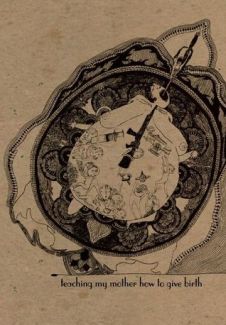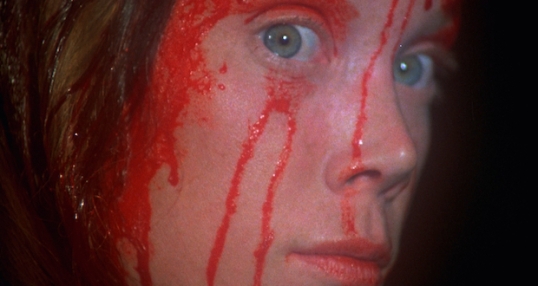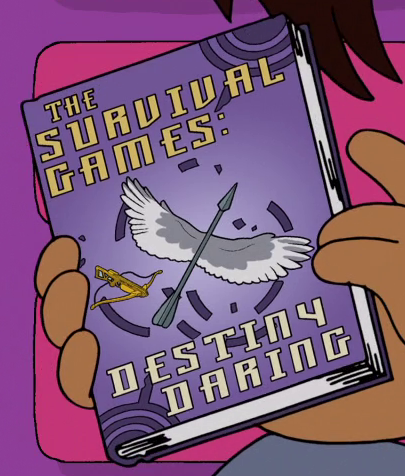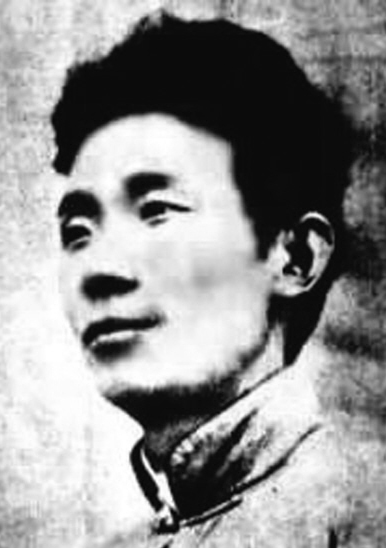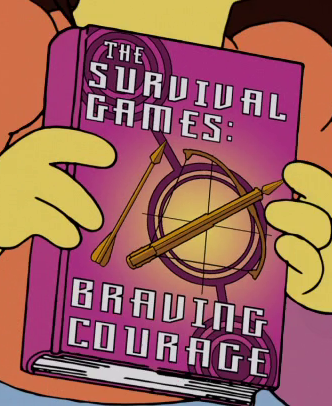This post is an outcome from getting inspiration from a post by Missmagic girl, who listed her favorite couples from literature. It was a fun blog post, so thought that I could write my own version for this blog. Unfortunately I couldn´t quite make a top ten list from literature alone (I very rarely enjoy the romantic plotlines in novels), so had to resort to films for help. But without further ado, let´s get started.
1. Peeta Mellark and Katniss Everdeen from “The Hunger Games”-trilogy by Suzanne Collins: This relationship works partly for two reasons. One is that it is slowly built up during the course of all three novels. The second is that while Peeta is profoundly kind and nice, the two younglings still are portrayed in a realistic fashion of occasional resentment and confusion, balancing these emotions with altruism and understanding. Both characters are also quite likeable, and the love story is also enjoyable for deconstructing our society’s ideas on masculinity. It´s just pleasant to have a relationship built on mutual trust and honesty, and Peeta´s overall kindness was just a refreshing form of romantic lead when I read it nearly four years ago. (I had gone through high school being frustrated at the so-called broody bad boys that was offered in young adult media back then, so the contrast for me personally was wonderful).

2. Ron Weasley and Hermione Granger from the “Harry Potter”-series by J. K. Rowling: Total honesty, during the whole course of my adolescence I was rooting for these two to get together. It was a big celebration when, in 2008, I finally finished “The Deathly Hollows” where they were shown getting together. Their bickering is fun, as well as their tender moments being very believable. Most fictional relationships are often quite filled with angst, or are sappy and are unrealistically tension free; Ron and Hermione, like Peeta and Katniss, however are able to both argue with each other, while simultaneously having enormous trust and faith towards each other. Finally, as a plotline, it was quite clever of Rowling to have Hermione to end up with Ron, a deuteragonist, since the cliché is often that the most prominent female character would end up with the stories hero. The relationship is subversive in structure and honest in depiction, and as a bonus quite cute.

3. Ronja and Birk from “Ronja the Robbers Daughter” by Astrid Lingren: While technically only remaining very close friends in the novel, the romantic subtext is quite heavy. The narration implies that due to both Birk and Ronja being roughly 12 year old, they naturally don´t quite understand romantic love yet, but as they get older they might end up getting a relationship upgrade. Yet even if the romance is just subtext, Ronja and Birk have a quite dramatic and powerful relationship. First they resent each other due to their parent’s disagreements, then they become such close friends that they find the courage to stand up for each other even if it results in their parents disowning them. While being forced to live alone together in the dangerous wild, it is proved that the duo make quite the team. Ronja´s and Birk´s friendship, and possible future romance, is embodied in fierce loyalty, and regardless of how the reader sees the implications of the relationship, is hugely touching.

4. Petite/Åsa and Torfinn from the “Vikinga”-trilogy by Maj Bylock: In these historical children´s books, we follow a young French girl who is abducted by Vikings and made a slave in Viking era Sweden. She escapes, is adopted by a kind couple, and grows up to become willingly engaged to a young man who himself wants to become a Viking. As a child I found myself surprisingly invested in this romance, since it raised questions of how one views themselves if they marry a person of questionable ambition, and how much one should change for their significant other. There will be no spoilers in case anyone wants to read these books (it is recommended), but let´s just say that the conclusion that the couple comes to at the end is quite heartwarming, making a sacrifice on both ends. Compromise is something that relationships truly need, but few fictional couples portray that, which I guess is why this couple actually did capture my interest as a kid.

Cover of the second book in series
5. Jelkele and Ulangalu from the fairy tale “Ulangalu”: This is a Monglian-Chinese story about a resourceful young mortal man, named Jelkele, who falls in love with a Snake spirit princess, Ulangalu. She´s essentially a snake that quite often takes human form. While the two hit it off instantly, Ulangalu´s father, the snake King, disapproves and decides to keep Ulangalu imprisoned in his home (which is essentially just a fancy cave). Jelkele decides to aid Ulangalu in her escape, and together they kill her abusive parent. While this couple´s story is noticeably more brutal then most couples´, the theme of loyalty is still quite strong in this tale. And while most (western) fairy tales would end up with the guy single handedly saving the princess, this tale ends with them charging the villain-father together. Like Ronja and Birk, they make a great team, and work off each other to make the best of the situation. Ulangalu, when not given the right to choose, gives herself agency. Just an overall nice, if a tag violent, story.

Image from a similar chinese folklore, “Madame Whitesnake”
6. Kien and Phuong from “The Sorrow of War” by Bao Ninh: Just as a heads up, this novel is really intense but really, really heartbreaking. Kien is a former soldier for the North Vietnamese side from the American/Vietnam War who suffers from severe Post-traumatic stress syndrome, while Phuong is his former high school sweetheart. The novel goes back and forth in the narrative, showing the horrific times of the war and the propaganda for the war both before and in its aftermath. The romance is shown in a similar fashion. Kien is idealistic and shy, Phuong is energetic and daring. Later on, Kien is disillusioned with life in the aftermath of the war, while Phuong attempts to help Kien and resolve his emotional and intellectual dilemmas. While Kien´s problems prevent the couple from remaining together, their interactions are quite romantic. Phuong is quite straight forward in her opinions, but Kien doesn´t mind; in fact he always considers what she says. Phuong empathizes with Kien, and is much more sexual than him. But most of all as a reader you really feel that they love each other, but after how things have gone about in the world it is sadly not possible for them to work it out. While many War novels depict these kinds of scenarios, it is few that are this devastating to read about.

7. Toni and Maria from “West Side Story” (1961): A New York, musical version of Romeo and Juliet does not only have great songs, but a surprisingly good chemistry between Natalie Wood (who plays Maria) and Richard Beymer (who plays Toni). Beside the chemistry, the couple, despite suffering from Insta-love, is well written ground for interplay of an amorous pair. They are playful, overly sappy in dialogue, impatient and forgiving. My favorite scene with them is when they imagine getting permission from their parents to get married and make up silly dialogue towards mannequins that represent the parents. It´s silly, but sweet. It is a perfect instant of showing and not telling; the filmmakers show the couple as getting along and enjoying each other’s company, instead of constant flowery speeches of eternal love.

8. Jack Skellington and Sally from “Nightmare before Christmas”: Once more, what makes this couple great are the characters and how they interact. Sally is wise and brave, Jack is passionate, ambitious and energetic. They complement each other nicely. While for the most of the movie Sally believes her feelings for Jack are unrequited, the ending of the film features by far one of the most romantic getting-together scenes ever made, period.

9. Balto and Jenna from “Balto”: One of the reasons this couple is so intriguing is that unlike a lot of children´s films, the protagonist Balto´s love interest Jenna is interested in him and knows he´s a decent guy from almost the beginning of the film. The reason for them getting together later is because of a tuberculoses outbreak, which is endangering the town’s child population including Jenna´s owner. This works in the films advance, since the film is more about Balto, who´s half dog and half wolf, coming to terms with his own identity by using both of his dog and wolf traits to bring the needed medicine into the town (through his sled pulling skills). Balto and Jenna, like a lot of couples on this list, come to each other’s aid when needed and Jenna believes in Balto when none of the other dogs do. The film keeps their story simple, which works perfectly. It´s just a story of two generous, kind dogs who find each other, nothing more grandiose needed.

10. Homer and Marge Simpsons from “The Simpsons” (pre-season 18): Truth be told my original pick was another relationship based on subtext, so I decided to go for a couple that´s explicitly in love but is a relationship which is both complex and enduring. Homer, despite his stupidity, does truly love his wife and kids, and Marge loves Homer irrespective of his many and overt vices. In several episodes Homer works strenuously for his love of the family. And even when Homers flaws overwhelm the family, prompting Marge to get angry and temporarily leave him, he respectfully lets her and considers why she is angry with him. Marge always defends Homer to her sisters, and is shown to be a good listener towards Homer. While Homer drinks too much and does mistakes, they as a couple find ways to make things work. Even if they are perhaps a bit of the typical screw ball family, the Simpsons are a family that sticks with each other, and despite their problems love each other dearly. This bonding and devotion, in its self, makes them deserving of being one of the most iconic couples, as well as family.
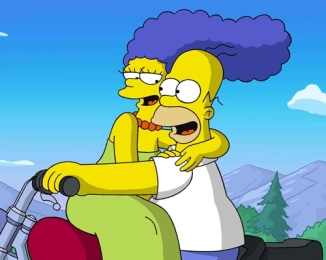
Honorable mentions:
R2D2 and C3PO from the “Star Wars” franchise: …What? Don´t look at me like that, they are totally meant to be a couple! On top of that, their bickering is legendary and their bond is unquestionable. One of the best written lines in “A New Hope” is when C3PO says, before R2D2 has to go off on the mission to blow up the Death Star with Luke is: “Promise me you´ll come back, won´t you R2? Because if you don´t my life will be boring. You don’t want my life to be boring, do you?”. That line right there is a better declaration of love than Han´s “I know” and everything that was written between Anakin and Padme, let´s be honest.

Leslie Knope and Ben Wyatt from “Parks and Recreation”: Not much to say here but that Ben is a very sweet person, Leslie is also very kind, together they are just adorable.

Gabriel and Batsheeba from “Far from the Madding Crowd” (2015 film adaption): A slow burn romance, but, therefore, all the better. Both Gabriel and Batsheeba are power focuses of activity, while leaving Batsheeba to her stubbornness, and Gabriel his honest kindness. Just watching them grow closer and remaining friends until the end where they decide to become a couple is a moving journey. Plus, Gabriel is not brooding at all, a huge plus in my opinion.

So those are my picks in this category. I´m going to do another second list along these lines, but with focus on Interspecies couples. So if anyone has some suggestions, feel free to comment, or just comment if you have any other favorite literary or otherwise fictional couples!
